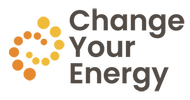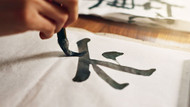Posted by Kris Allo on Jul 18th 2025
The Meditative Medicine of Asian Brush Painting
There’s something about watching ink flow across paper that calms the mind almost instantly. Maybe it’s the way the night black color feathers and pools, or the quiet concentration it draws out of you.
At Change Your Energy, we honor the deep cultural roots of Asian brush painting. We also believe that feeling into this style of painting—its vitality and power, its perfect imperfections, and spaciousness—holds powerful medicine for the heart and mind.
Unlike many Western art traditions, traditional Asian brush art isn’t concerned with replicating reality. Instead, it values essence over realism. The aim isn’t to depict a flower exactly, but to capture its breath, its gesture, its aliveness.
That distinction is what gives this art form a unique healing power. As shared in a piece from the Cancer Support Community, participants in Chinese brush painting classes for cancer survivors reported a sense of peace not from mastering technique, but from letting go. One participant said, “You’re focused on the subject and forget everything else that is going wrong with you.” That full presence, that momentary freedom from worry, is healing in itself.
Brush as Body, Ink as Breath
In brush painting, your whole body becomes part of the mark. The pressure of your hand, the fluidity of your breath, the steadiness (or shakiness) of your energy all show up in the line. The brush reveals your inner state in real time.
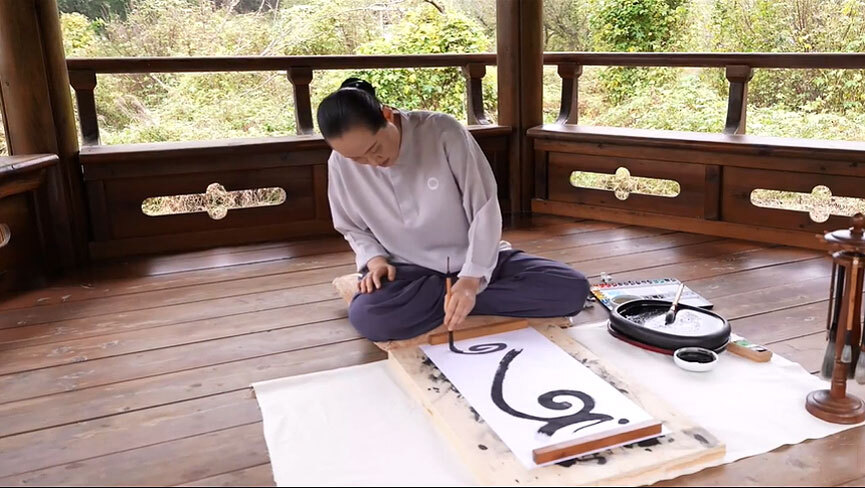
This is why brushwork is often used in therapeutic contexts. The ink reacts instantly to your movements, offering visual and sensory feedback that skips intellectual analysis and speaks directly to the heart. There’s no need to explain what you’re feeling; it’s right there on the page.
As the ink dries, the work becomes a reflection of who you were in the moment. Once it’s made, it can’t be changed. And if a line doesn’t turn out the way you expected, that’s part of life too. Learning to accept imperfection, impermanence and lack of control is all part of the healing.
How to Practice
Traditional ink has a distinctive flow and texture, but if you don’t have ink, don’t let that stop you from giving it a try. You can also use watercolor paint. It might be less predictable depending on how much water you use, but that unpredictability is part of what makes it so valuable. You just practice letting go, adjusting in real time, and meeting what arises.
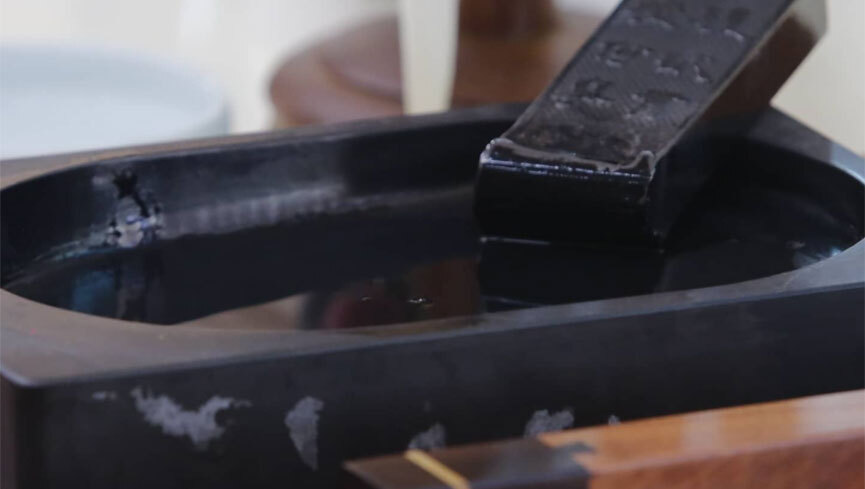
Try using a soft brush and focus on fluid, intentional strokes. Feel as if you’re letting the brush lead you rather than trying to force an outcome. Watch the way the color bleeds, pools, and settles. Maybe it can show you something about your own internal state.
Although colors have their own energetic power, there’s something especially profound about the simplicity of pure black on white paper. If you leave a lot of space between strokes, the stark contrast can truly calm the senses. In an overstimulated world full of sensory overload, this simplicity can feel like a balm. It invites us into stillness and clarity, offering rest for the eyes and the nervous system.
Unlike thinking or talking, which often loop in circles, the act of mark-making is clarifying. It helps you feel where you are. It gets energy moving. And once energy moves, healing can begin.
You don’t have to be an artist to do this. In fact, it’s better if you aren’t aiming to make something “good.” This practice is about using movement, line, and intention to shift your energy and transmute what’s stuck. Whatever felt hard can now soften. Whatever felt loud, can quiet down.
Try This
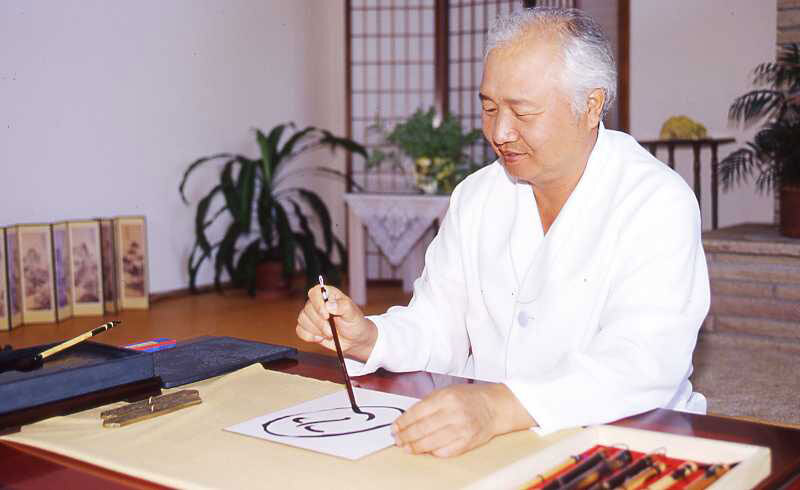
Here’s a simple brush art practice you can do with ink, watercolor, gouache, or watered-down acrylic paint:
- Sit in silence for a moment, bringing your attention to your breath and the sensations in your body.
- Dip your brush into the paint or ink, letting it fill with plenty of water. Hold the brush lightly near the top of the handle, allowing it to hang vertically or nearly vertically above the paper. In traditional Asian brushwork, the brush is often held upright with a relaxed hand—stable, but not rigid.
- Let your hand move with your breath. You might paint one stroke on the inhale, and one long, slow stroke on the exhale. Or you could try making one half of a circle with your inhale, and completing it on your exhale. An inhale might guide your hand upward, with the exhale bringing it back down. Explore different ways to let your breathing shape the movement.
- Keep your awareness on both your breath and the flow of ink on the page. Watch how it spreads, skips, pools, or fades. Let it be part of your meditation.
- Focus simultaneously on your breath and watching the ink on the page.
- Practice for a few minutes or as long as you like. Let the paper capture whatever needs to come through.
Explore Our Asian Brush Art Collection
The brush art pieces in our energy art shop were created by Tao Masters who have spent decades cultivating that same sense of attunement and embodied presence. Their energy lives in the work and can bring the wisdom of harmony, strength and presence into your life.
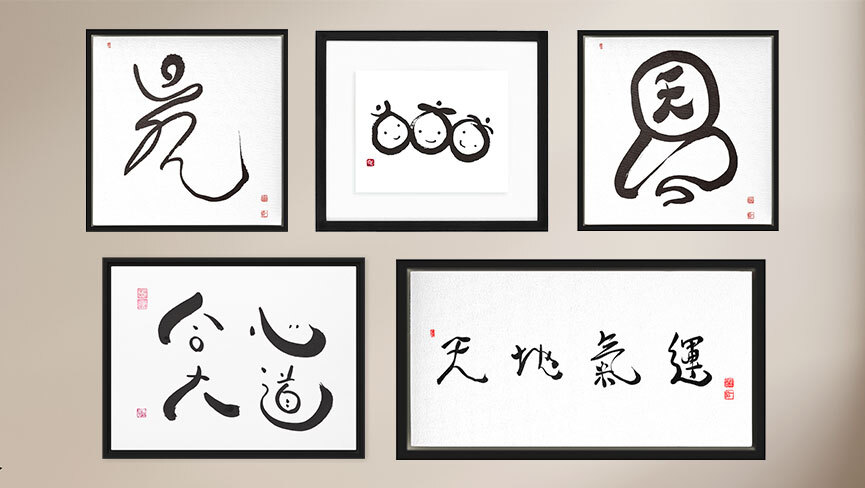
Check out the Asian Brush Art Collection here to find what resonates with you.
